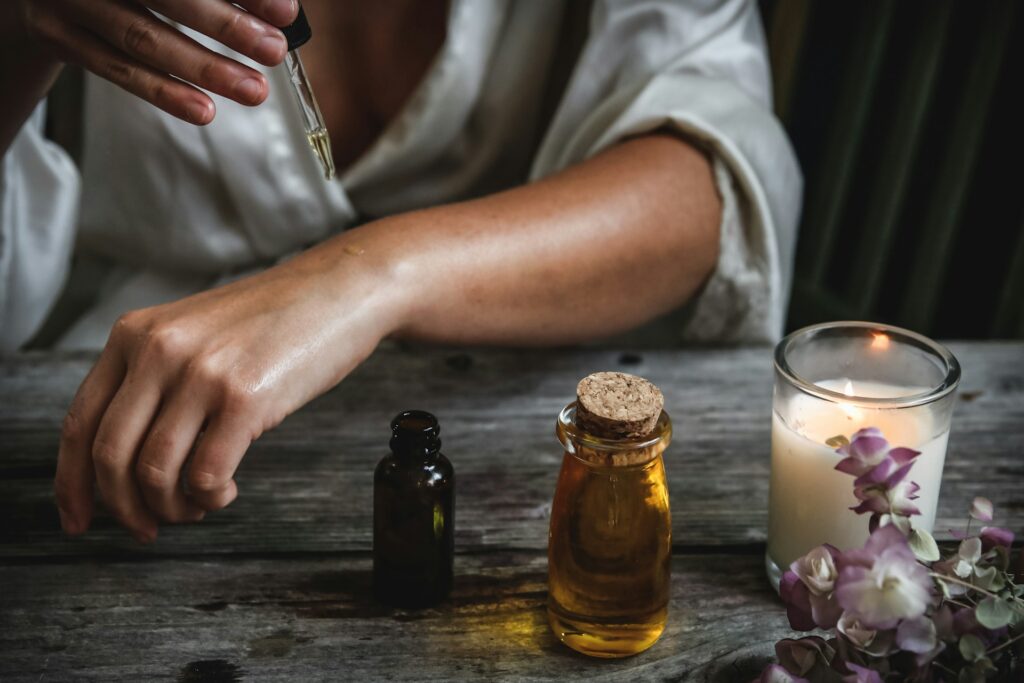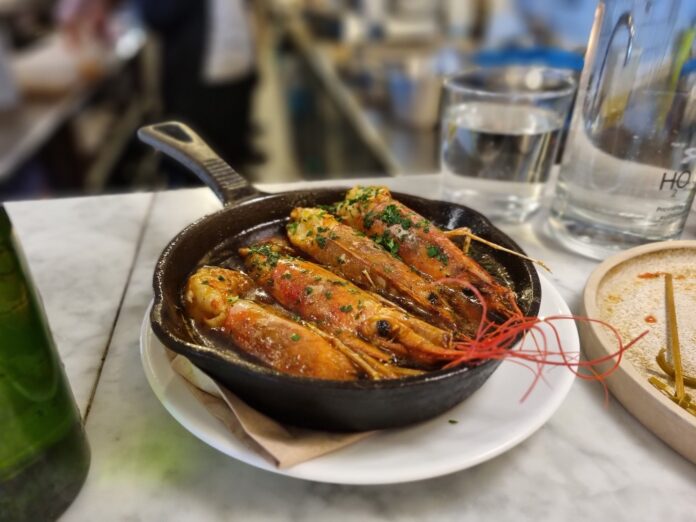When the revered botanist Ibn al-Baitar wandered through the aromatic gardens of Al-Andalus in the 13th century, he documented hundreds of essential oils and their effects – not knowing that eight centuries later, his meticulous observations would resonate with a contemporary movement in perfumery.
Today’s return to essential oil-based fragrances isn’t merely a trend, but rather a complex dialogue between ancient wisdom and modern consciousness, between tradition and innovation in the art of scent.
A Journey Through Time
The story of essential oil perfumery winds through the corridors of human civilisation like a fragrant thread. In ancient Egypt, master perfumers created kyphi—a complex blend of sixteen ingredients including frankincense, myrrh, and juniper—used in both religious ceremonies and daily life.
The Persians perfected the art of rose distillation, with the physician Ibn Sina (Avicenna) developing the coiled cooling pipe that revolutionised essential oil extraction. In India, attars—natural perfumes made by distilling flowers and herbs into sandalwood oil—have been crafted for over a thousand years.
This rich heritage was temporarily overshadowed by the chemical revolution of the late 19th century. The synthesis of coumarin in 1868 marked the beginning of modern perfumery, with synthetic molecules offering consistency, lower costs, and novel scent profiles that natural materials couldn’t provide. The industry embraced these innovations, and by the mid-20th century, synthetic fragrances dominated the market.
Read: How to find your IDEAL perfume

The Contemporary Revival
Today’s essential oil based perfumes represent more than a simple return to tradition. It emerges from a complex intersection of environmental consciousness, wellness philosophy, and a desire for authenticity in an increasingly synthetic world. Small-batch perfumers like Mandy Aftel in Berkeley and Dominique Dubrana in Italy have become modern standard-bearers, creating sophisticated compositions that challenge the assumption that natural perfumes can’t match the complexity of synthetic ones.
The Science Of Natural Scent
Understanding essential oil perfumes requires delving into their molecular composition. Each essential oil contains hundreds of different compounds—a single rose oil might contain over 400 identifiable molecules. This complexity creates what perfumers call the “living scent” phenomenon, where fragrances evolve dramatically on the skin throughout the day.
Take, for instance, sandalwood oil from Mysore. Its principal molecules, α- and β-santalol, interact with skin proteins differently than their synthetic counterparts, creating a warm, woody scent that becomes increasingly complex over time. This biological interaction explains why natural perfumes, though often subtler, can create more intimate and personal fragrance experiences.
Read: The 10 best perfumes to give a man
The Creation Process
Modern essential oil perfumery balances ancient techniques with contemporary innovation. Traditional methods like enfleurage—the process of capturing flower scents in cold fat—are still used for delicate botanicals like jasmine and tuberose. However, new techniques like CO2 extraction allow perfumers to capture previously unattainable scent profiles while maintaining environmental sustainability.
The formulation process itself requires remarkable precision. Unlike synthetic perfumes, which can be consistently reproduced through chemical formulas, natural perfumes must account for variations in botanical materials. Factors like harvest season, weather conditions, and soil composition can significantly affect an oil’s scent profile, requiring perfumers to constantly adjust their formulations.

Challenges & Solutions
The essential oil perfume movement faces significant challenges. Sustainability is paramount—it takes approximately three tons of rose petals to produce one kilogram of rose essential oil. Leading perfumers are addressing this through vertical integration, establishing their own organic farms or partnering with sustainable growers. Others are exploring alternative extraction methods or using less resource-intensive botanicals.
Climate change poses another challenge, affecting both the availability and quality of essential oils. Some perfume houses are responding by diversifying their supply chains and investigating resistant plant varieties, while others are working to preserve endangered aromatic species through conservation projects.
The Future Of Natural Fragrance
The movement continues to evolve, with several exciting developments on the horizon. Research into biofermentation might soon allow the creation of natural aroma molecules without placing pressure on plant resources. Advanced extraction techniques are enabling perfumers to capture previously unattainable scent profiles, while new understanding of skin chemistry is informing more sophisticated fragrance compositions.
Looking forward, the essential oil perfume movement seems poised to bridge the gap between tradition and innovation, creating fragrances that honour both our aromatic heritage and our modern environmental consciousness. It reminds us that in perfumery, as in many arts, moving forward sometimes means returning to our roots—albeit with new understanding and purpose.
For those interested in exploring this world, the journey begins with understanding that these perfumes offer more than just scent—they provide a connection to both our collective past and our sustainable future, one fragrant molecule at a time.





